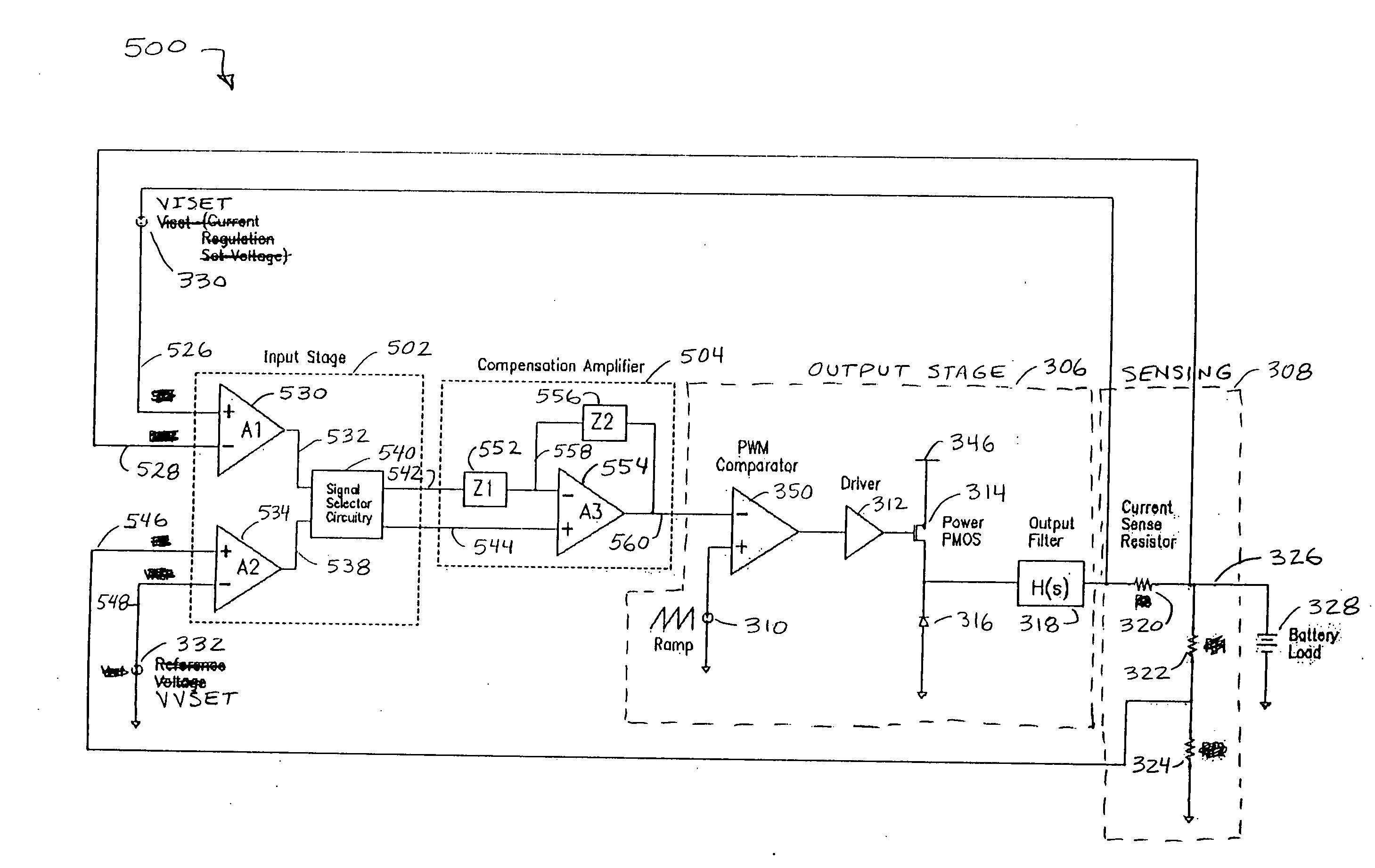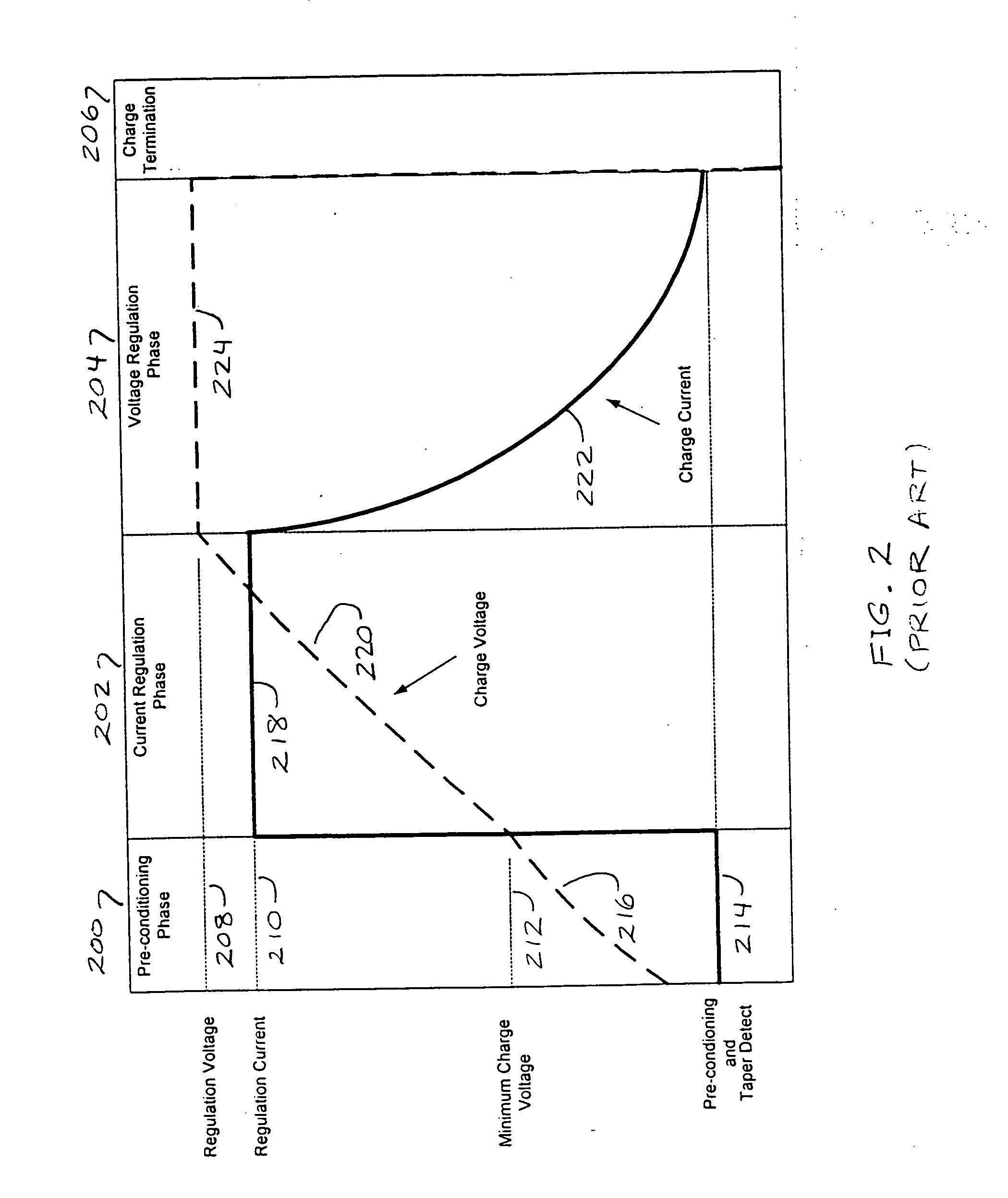Area-efficient compensation circuit and method for voltage mode switching battery charger
a compensation circuit and battery charger technology, applied in electric power, transportation and packaging, electric vehicles, etc., can solve the problems of die size and cost penalties, variability in the gain of transconductance amplifiers with process and temperature variation, etc., to improve the performance of compensation amplifiers, reduce the required die area, and improve the effect of compensation amplifier performan
- Summary
- Abstract
- Description
- Claims
- Application Information
AI Technical Summary
Benefits of technology
Problems solved by technology
Method used
Image
Examples
Embodiment Construction
[0021] As shown in FIG. 1, a typical battery charger 100 has an input voltage applied to the input 106 of an output stage 102. Output stage 102 is a voltage-controlled current source (VCCS) which serves to regulate the flow of current from input 106 to a battery 116 which is to be charged. Battery charging current is sensed by a sensor 114 at the output of output stage 102. Sensor 104 outputs a voltage representing the charging current to a first input 108 of a charger control circuit 104. Voltage on the battery 116 is also sensed, and is applied to a second input 110 of charger control circuit 104. Charger control circuit 104 is adapted and configured in response to the inputs 108, 110, to determine whether a constant current or constant voltage should be applied to the battery 116 being charged. In response to this determination, a control signal is applied by way of feedback to a control input 112 of the VCCS 102, to set the current into or voltage applied to battery 116 (as appr...
PUM
 Login to View More
Login to View More Abstract
Description
Claims
Application Information
 Login to View More
Login to View More - R&D
- Intellectual Property
- Life Sciences
- Materials
- Tech Scout
- Unparalleled Data Quality
- Higher Quality Content
- 60% Fewer Hallucinations
Browse by: Latest US Patents, China's latest patents, Technical Efficacy Thesaurus, Application Domain, Technology Topic, Popular Technical Reports.
© 2025 PatSnap. All rights reserved.Legal|Privacy policy|Modern Slavery Act Transparency Statement|Sitemap|About US| Contact US: help@patsnap.com



